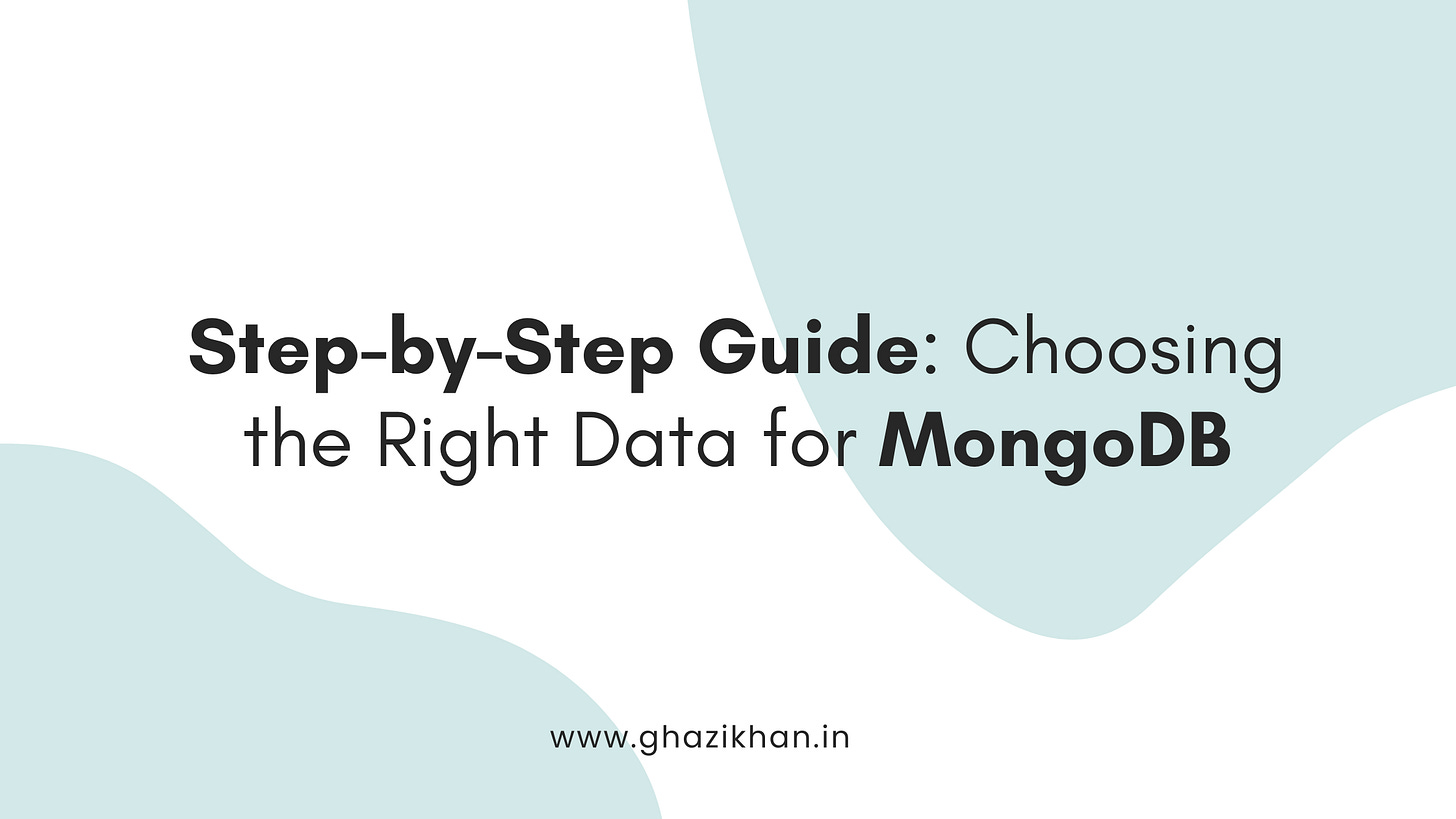Step-by-Step Guide: Choosing the Right Data for MongoDB
Learn how to identify and leverage MongoDB's strengths for unstructured data, dynamic schema, scalability, and complex relationships in this comprehensive step-by-step guide.
Introduction
MongoDB is a NoSQL database that excels at handling unstructured or semi-structured data, making it an excellent choice for specific use cases. This guide will help you determine the types of data that are best suited for storage in MongoDB.
Step 1: Understand MongoDB's Data Model
MongoDB stores data in BSON (Binary JSON) format, which is a flexible, schema-less representation. It organizes data in collections (similar to tables in relational databases), and each document (record) can have a different structure within a collection.
Step 2: Identify Unstructured or Semi-Structured Data
MongoDB is particularly well-suited for handling data that doesn't fit neatly into traditional relational database tables. Examples of such data include:
JSON-like Documents: If your data can be represented as nested key-value pairs, arrays, and subdocuments, MongoDB is a great fit.
Dynamic Schema: When your data evolves over time, and you don't have a fixed schema, MongoDB's flexible schema allows you to add fields without affecting existing documents.
Step 3: Consider Use Cases
MongoDB is ideal for scenarios where:
Scalability: If your application requires horizontal scaling and sharding for distributing data across multiple servers, MongoDB can easily accommodate this.
Real-time Analytics: For applications that demand real-time analytics and reporting, MongoDB's indexing capabilities and query performance make it a strong contender.
Step 4: Complex Hierarchical Data
If your data involves complex hierarchical relationships or arrays, MongoDB can handle this naturally. For instance:
Nested Data: MongoDB's ability to store nested arrays and documents simplifies representing hierarchical relationships.
Arrays: When your data involves lists or arrays of values, MongoDB's support for array types is beneficial.
Step 5: Geographic Information
If your data involves geospatial information, MongoDB has built-in support for geospatial indexes and queries, making it suitable for location-based services.
Step 6: High Write Loads
MongoDB is optimized for high-volume write operations, making it well-suited for scenarios with frequent updates and inserts.
Step 7: Diagrams for Better Understanding
Example of MongoDB Document Structure
{
_id: ObjectId("60a5cde9f3a3feaa8cbbd807"),
name: "John Doe",
age: 30,
address: {
street: "123 Main St",
city: "Anytown",
country: "USA"
},
hobbies: ["reading", "gaming"]
}
MongoDB Cluster for Scalability
[Application]
|
[Load Balancer]
/ | \
[Node1][Node2][Node3]
\ | /
[Shard1][Shard2]
Conclusion
MongoDB is a powerful NoSQL database that shines in scenarios involving unstructured or semi-structured data, dynamic schema, scalability, and complex hierarchical relationships. By understanding your data characteristics and application requirements, you can make
Follow me for more content like this:
LinkedIn: https://www.linkedin.com/in/ghazi-khan/
Twitter: https://twitter.com/ghazikhan205
Youtube: http://www.youtube.com/@codewithghazi
Instagram: https://www.instagram.com/codewithghazi/


